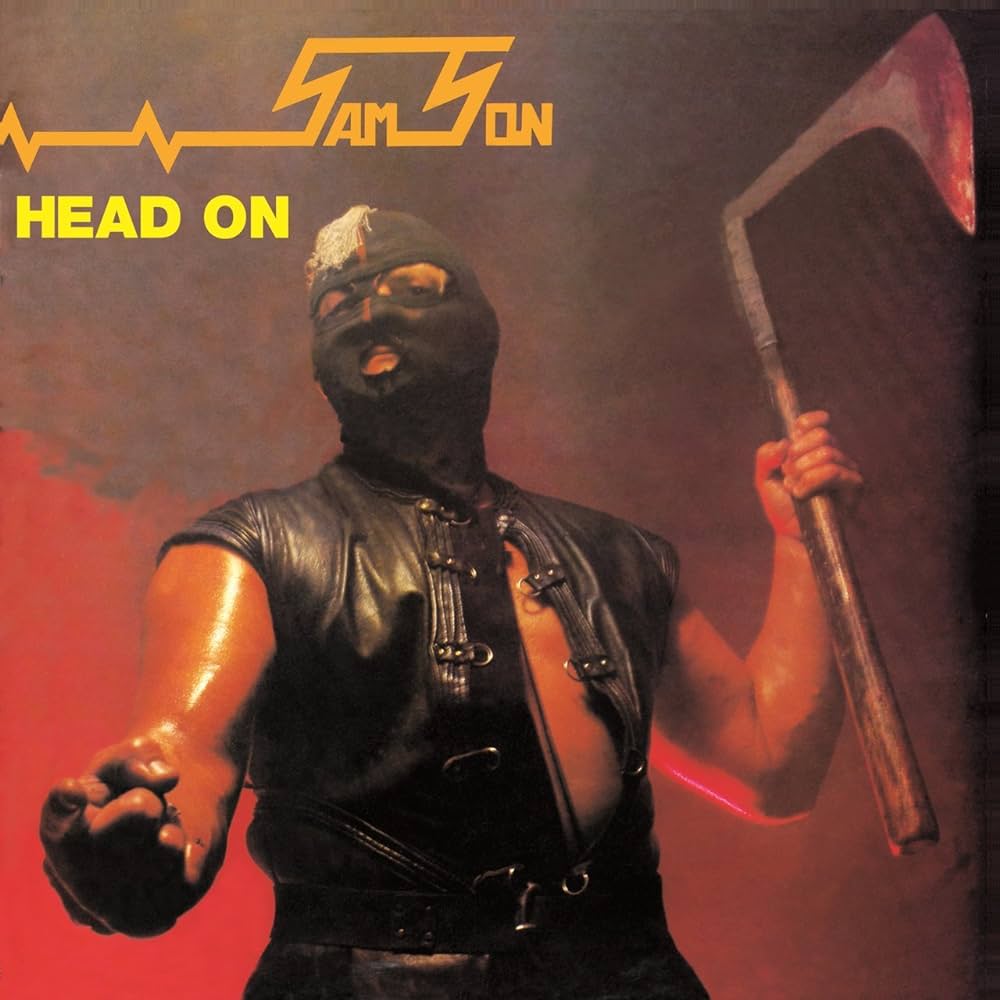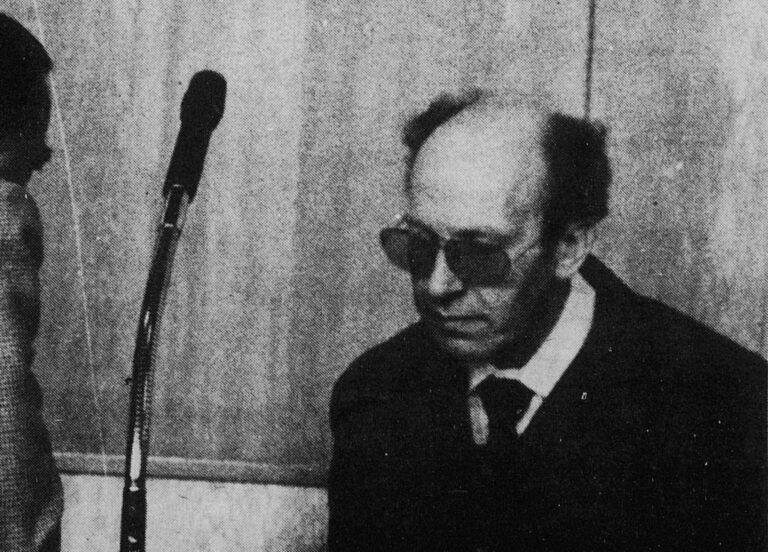
Samson is one of the pioneers of what would become known as the New Wave of British Heavy Metal, often abbreviated as NWOBHM, which was a wave of new heavy metal from Britain in the late 70s and early 80s. Samson released two singles as early as 1978, and in 1979, the debut album “Survivors” was released. It’s worth noting that “Survivors” has a greater influence of 70s hard rock than the heavy metal expression they got on “Head On,” which we’ll delve into here. The biggest difference between the two albums is that the band now had a frontman and vocalist on “Head On,” instead of using guitarist Paul Samson to sing. That vocalist is none other than Bruce Dickinson – who would later join Iron Maiden. Here under the name “Bruce Bruce,” as the rest of the band called him after a sketch from Monty Python. In fact, Bruce Dickinson was supposed to do the vocals again on “Survivors,” but those tracks were not released until the reissue in 1990. The band dropped those plans and went straight into making the sequel “Head On”. Here, everything is elevated with better production, better songs, and, notably, better vocals.
The album opens energetically with “Hard Times.” A rocking song with a quirky text, including the line “Knee me in the groin won’t make a sound.” The subsequent song “Take it Like a Man” is more uplifting, where Dickinson’s voice gets more room to play. Among other things, in a beautiful chorus and a delightful primal scream in the middle part. However, the lyrics are not great with lines like “Little boy blue, take off your shoe.” One can perhaps see the contours here that Paul Samson was not the greatest lyricist. That was somewhat evident already on the debut, where there is a song called “I Wish I Was The Saddle Of A Schoolgirl’s Bike.”
The album continues with “Vice Versa,” which is one of the highlights of the album. With a calm verse, a more dramatic chorus, and a rocking middle part with a solid solo by Paul Samson. “Manwatcher” and “Too Close to Rock” are more in the hard rock vein. But the first song on the B-side; “Thunderburst,” is probably the big surprise of the album for many. This is an instrumental of just over two minutes that most people know better as “The Ides Of March” by Iron Maiden. This was released the year before Iron Maiden released the same song on “Killers.” Bruce Dickinson is not the only connection to Iron Maiden in Samson, but the band’s drummer Thunderstick, or Barry Graham Purkis as he is actually named, was previously with Iron Maiden. In the short period he was with Iron Maiden in 1977, the band played “The Ides of March.” Thunderstick made these drum rolls that are so important for the song, but Steve Harris wrote the rest of the song. Therefore, Thunderstick took the song further in Samson. As most people know, drums do not give songwriting credit, so when it became known that Samson had recorded “The Ides of March,” Maiden manager Rod Smallwood took action. Thus, Steve Harris is credited on “Thunderburst,” while Thunderstick is not credited on “The Ides of March.” The songs are not exactly the same either. Which is not so strange as three years had passed since Thunderstick was with Iron Maiden. Thunderstick also adorned the cover of “Head On,” and his mask became the face of the NWOBHM wave.
The album continues with “Hammerhead,” which is one of the coolest songs on the album. A rocking song with cool guitar parts and lovely vocals by Dickinson. Especially, I like the part two minutes into the song where the electric guitar stops and an acoustic guitar takes over. Dickinson’s vocals come across incredibly well here and sound beautiful. “Hunted” is also a fun song, but of the slightly quieter kind. “Take Me to Your Leader” is a bit further down the quality line with its stressed expression. “Walking Out on You,” over six minutes long, provides an epic ending to the album. Samson was to release one more album with Dickinson behind the microphone, and that was “Shock Tactics” the following year, which is at least as good as “Head On.” But Dickinson chose to leave Samson when he was offered to join Iron Maiden. Thus, Samson had to find a new vocalist, and unfortunately, the band was never as good again as on the two albums with Bruce Dickinson.
Released June 1980 on Gem.







Love this album!